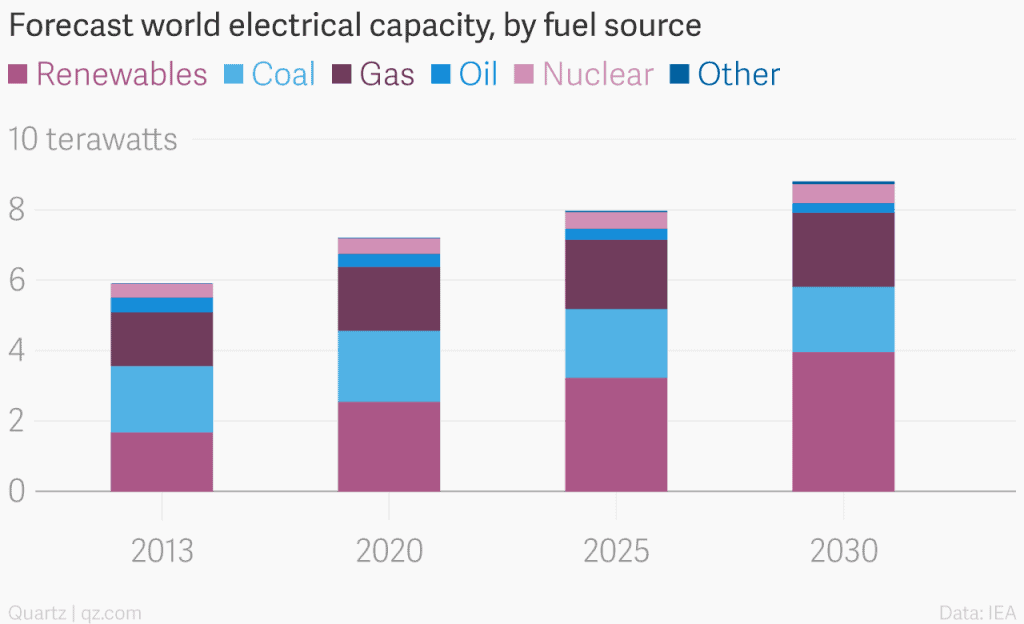In only 15 years, renewable energy (wind, solar, hydro) could surpass fossil fuels as the main provider of energy. According to a new International Energy Agency (IEA) report, renewables could provide more than 50% of the energy market by 2050. But even so, they warn, without bolder emission cuts, we’ll be blowing past our current climate targets.

Last year, the global economy grew by 3% but emissions stayed flat. This was “the first time in at least 40 years that such an outcome has occurred outside economic crisis,” the IEA said. This is a clear indication that global economy is starting to decouple from CO2 emissions – that is, we will no longer need to burn more fuel to develop our economy, as was the rule for the past decades.
This comes, at least in part, as a result of a surge of cheaper renewable energy. Hydropower schemes, wind turbines, solar farms and other renewable sources, all played their part, accounting for 128 gigawatts of new power capacity, attracting some $270 billion in investments. Interestingly enough, China led the way in terms of investing in renewables, with $80 billion – as much as the US and the European Union combined.
So we might be heading towards a future where renewables rule the market – and that future may be led by China. But even if this happens, we’re still off track for meeting the 2 degree goal: the plan of keeping global temperatures less than 2 degrees higher than before the industrial revolution. The IEA actually offers a plan to meet the 2 degree target, a plan that has five main parts:
1. Increasing energy efficiency
2. Reduce coal and ban new coal plants
3. Ratchet up investment in renewables from $270 billion to $400 billion by 2030
4. Phase out fossil fuel subsidies
5. Reducing methane emissions in oil and gas production
There are reasons to be optimistic, and reasons to be pessimistic – we’ll see what the future brings, but it seems like interesting times are coming.






